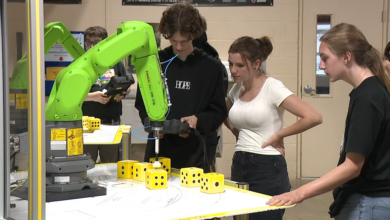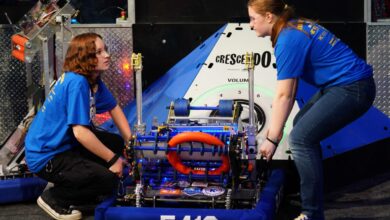AI Helps Robots Manipulate Objects with Their Entire Bodies

Humans are generally good at whole-body manipulation, but robots struggle with such tasks. Now, MIT researchers have found a way to simplify this process, known as contact-rich manipulation planning. They use an AI technique called smoothing, which summarizes many contact events into a smaller number of decisions, to enable even a simple algorithm to quickly identify an effective manipulation plan for the robot.
This method could one day potentially enable factories to use smaller, mobile robots that can manipulate objects with their entire arms or bodies, rather than large robotic arms that can only grasp using fingertips. This may help reduce energy consumption and drive down costs. In addition, this technique could be useful in robots sent on exploration missions to Mars or other solar system bodies, since they could adapt to the environment quickly using only an onboard computer.
“Rather than thinking about this as a black-box system, if we can leverage the structure of these kinds of robotic systems using models, there is an opportunity to accelerate the whole procedure of trying to make these decisions and come up with contact-rich plans,” said Co-Lead Author H.J. Terry Suh.
Reinforcement learning is a machine-learning technique where an agent, like a robot, learns to complete a task through trial and error with a reward for getting closer to a goal. It has been used effectively for contact-rich manipulation planning, where the robot seeks to learn the best way to move an object in a specified manner.
But because there may be billions of potential contact points that a robot must reason about when determining how to interact with an object, the trial-and-error approach requires a great deal of computation.
On the other hand, if researchers specifically design a physics-based model using their knowledge of the system and the task they want the robot to accomplish, that model incorporates structure about this world that makes it more efficient.
They conducted a detailed analysis and found that a technique known as smoothing enables reinforcement learning to perform so well.
Many of the decisions a robot could make when determining how to manipulate an object aren’t important in the grand scheme of things. Smoothing averages away many of those unimportant, intermediate decisions, leaving a few important ones.
Reinforcement learning performs smoothing implicitly by trying many contact points and then computing a weighted average of the results. Drawing on this insight, the MIT researchers designed a simple model that performs a similar type of smoothing, enabling it to focus on core robot-object interactions and predict long-term behavior. They showed that this approach could be just as effective as reinforcement learning at generating complex plans.
“If you know a bit more about your problem, you can design more efficient algorithms,” said Co-Lead Author Tao Pang.
The researchers combined their model with an algorithm that can rapidly and efficiently search through all possible decisions the robot could make.
They first tested their approach in simulations where robotic hands were given tasks like moving a pen to a desired configuration, opening a door, or picking up a plate. In each instance, their model-based approach achieved the same performance as reinforcement learning, but in a fraction of the time.
“The same ideas that enable whole-body manipulation also work for planning with dexterous, human-like hands. Previously, most researchers said that reinforcement learning was the only approach that scaled to dexterous hands, but Terry and Tao showed that by taking this key idea of (randomized) smoothing from reinforcement learning, they can make more traditional planning methods work extremely well, too,” said Senior Author Russ Tedrake.
“If you study your models carefully and really understand the problem you are trying to solve, there are definitely some gains you can achieve. There are benefits to doing things that are beyond the black box,” Suh said.
For more information, contact Abby Abazorius at




